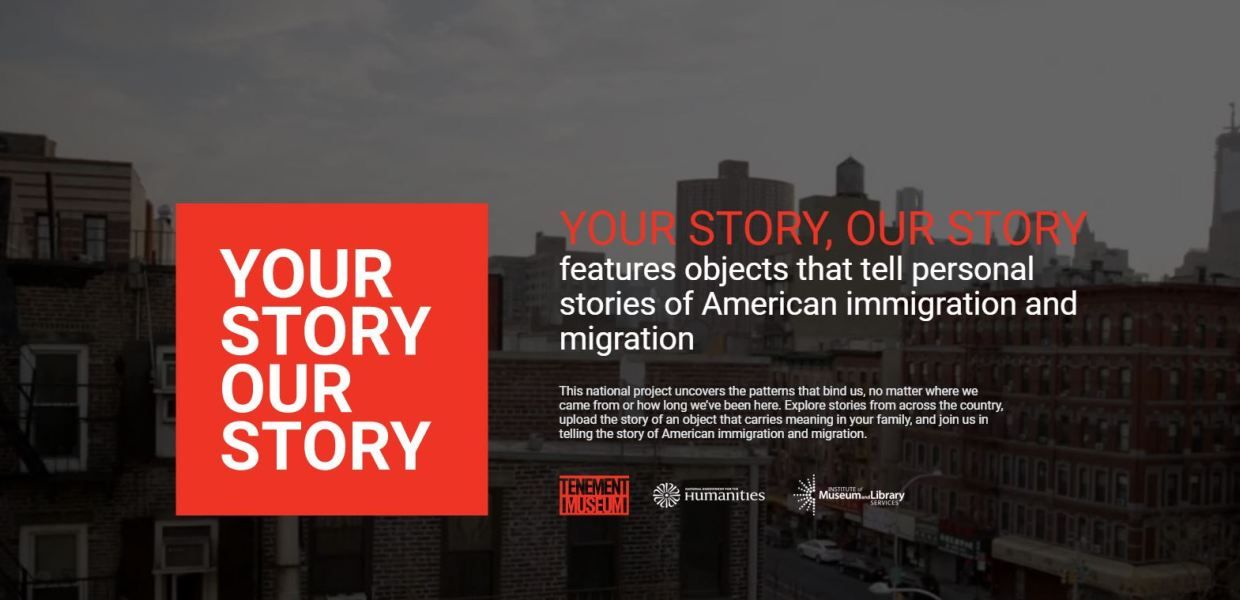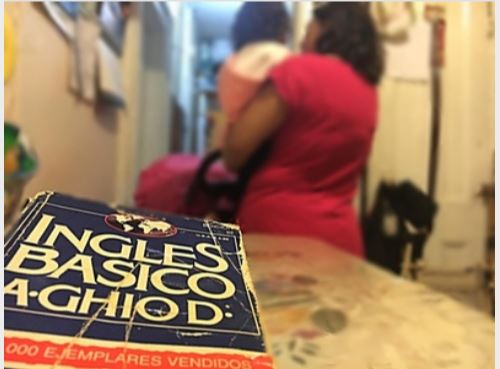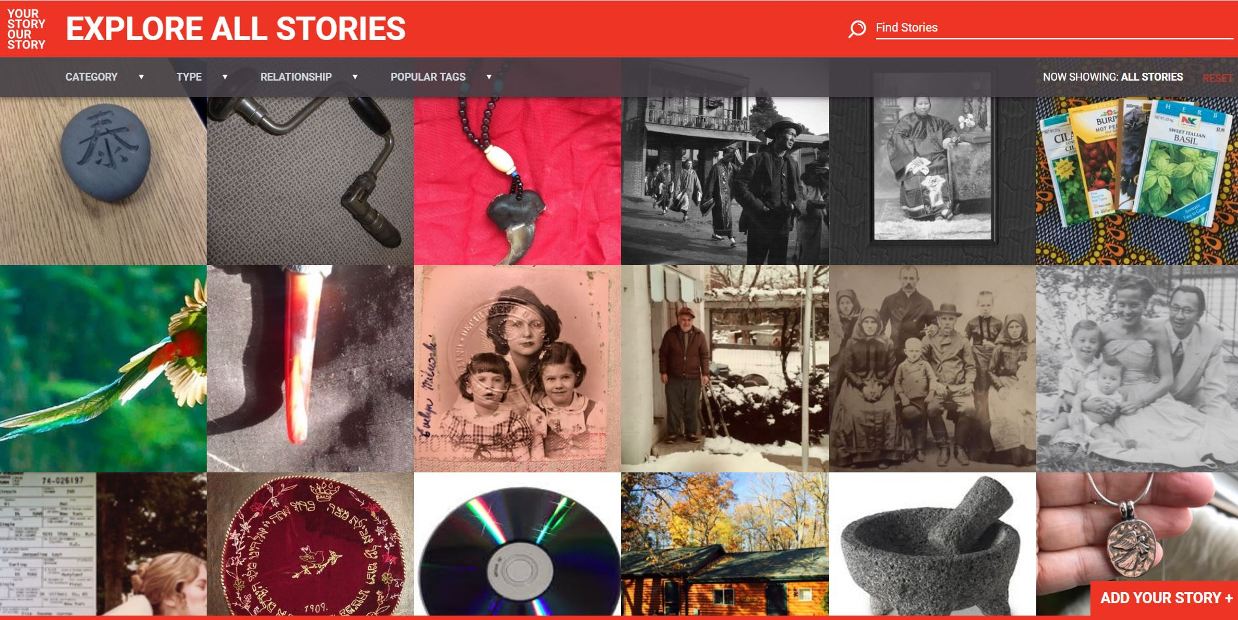Mapping migration in the arts: Your Story, Our Story
As part of the upcoming Europeana Migration campaign, we highlight more initiatives relating to migration and culture beyond our own network.

- Title:
- Your Story, Our Story homepage
- Creator:
- Tenement Museum
- Date:
- 2018
- Institution:
- © Lower East Side Tenement Museum
- Country:
- USA
Throughout 2018, Europeana Migration will focus on how migration to, from and within Europe has shaped our cultural heritage. On the run-up to the campaign launch, we are featuring a number of interviews with arts and cultural heritage professionals working on projects related to migration, to shine a light on other initiatives showing the cultural sector’s response to this topic.
This time, we speak to Kathryn Lloyd, Director of Programs at the Tenement Museum in New York, about their online collecting project Your Story, Our Story.
What’s Your Story, Our Story all about?
The Tenement Museum tells the stories of immigrants who started their lives anew on Manhattan's Lower East Side between the 19th and 21st centuries. Their stories are told through recreated apartments and businesses of real families in two historic tenement buildings. Our tenements once housed over 10,000 working class immigrants from over 20 nations.
Visitors often want to share their stories, but we didn’t have a way to preserve them until 2013, when we started Your Story, Our Story. So far, more than 3,000 people have submitted stories to the collection, from 11 states across the US. People can now explore stories from people they might not otherwise meet, and we hope that by sharing a wide range of generations and perspectives, people can learn from others’ stories.
What sort of stories are people telling?
We’ve found it is easier to centre stories around objects, something museums do all the time. When someone is asked ‘tell us your family’s migration story’, they may not know where to start but if you ask them to select an object that tells part of their family’s migration story, then it becomes much more tangible. So far, people have written about objects that speak to their family’s culture and identity - anything from traditions, music and recipes, to their names and basketball.
S. Jefferson, 2002. © 2018 Lower East Side Tenement Museum
One of my favourite stories is from the son of a woman who migrated from a Spanish-speaking country. His story centres on a photograph of his mother pushing a stroller with an English dictionary in the foreground. For him, the photograph represents the struggle she went through when trying to learn English while having a baby.
We share some of these stories through our social media and during museum tours. We have found that people are really honoured and pleased that the museum is telling their family’s story.
How did you develop the Your Story, Our Story website?
We started with a simple Pinterest board, working with school groups. Since then, we’ve made a bespoke site, consulting with teachers, scholars and our museum educators to think through how we make the site work for people. There were some surprises: one of the biggest things teachers wanted was to be able to print the stories, so they could hang them up in their classrooms. This was something very simple that we hadn’t thought of.
A recent redesign now offers visitors the opportunity to submit up to two minutes of audio. We think this will be key to collecting visitors’ stories - they might find it difficult to write in the moment, whereas telling a story is easier.
Your Story, Our Story 'Explore' page © 2018 Lower East Side Tenement Museum
Who else have you worked with on Your Story, Our Story?
We started collecting stories with a local fifth grade class in Brooklyn. Since the beginning, working with groups has helped us achieve our aims to connect stories across generations and places.
Through funding from the National Endowment for the Humanities and the Institute for Museum and Library Services, we’ve partnered with the Wing Luke Museum in Seattle, the Minneapolis Institute of Art, and the National Trust for Historic Preservation, who will all incorporate Your Story, Our Story into their programming and collect stories in their communities.
What’s next for Your Story, Our Story?
We’re now working on adding scholarship and historical context - that was really important for us because that’s what we do at the museum. We’re working on making short videos mixing insight from migration scholars with personal stories. These will focus on current events and topical issues such as legality and language acquisition - content that supplements what our visitors discuss or what teachers use in their curriculum.
We’re also thinking of experimenting by asking specific questions around certain times of the year, for example what holiday traditions families have.
I can see projects like this having really good applications in workplaces, as a sort of team-building exercise to write a story and share with colleagues. We’re also interested in marketing this to family reunions, when people come together and share stories.



